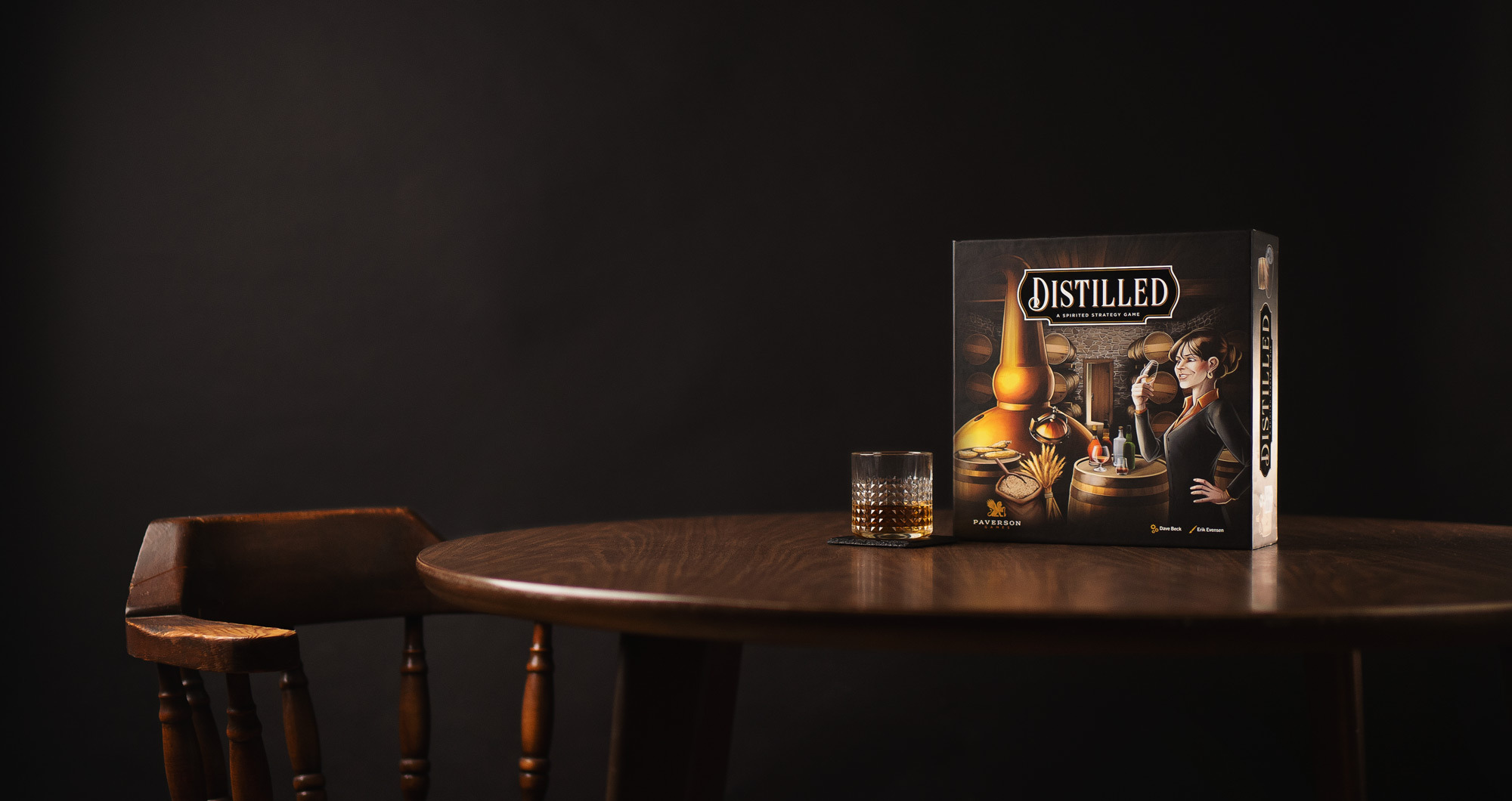
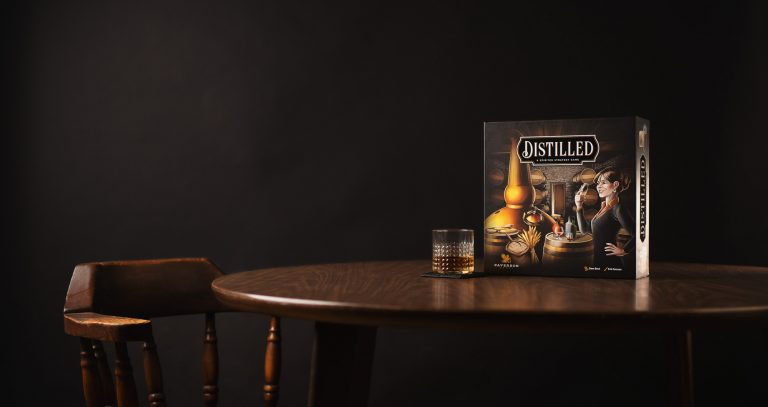

I played a game last night of Distilled by Dave Beck and Paverson Games. Distilled is a game where players run distilleries making spirits (alcohol, not ghosts). This first play of the game was entertaining, even with two of us making some big mistakes. Making mistakes on the first play of a game is typical when a game has many rules dissimilar to other games, and Distilled is a bit different from other games. I recommend this game for people who can tolerate a small amount of randomness and press-your-luck actions and like to build or make stuff in a game. I certainly like building things, and I can handle a little bit of random losses as long as they can’t be devastating.

The picture above shows the layout of our game, with my setup visible in the foreground. The board in the upper left is the scoreboard with the market for items, upgrades, and ingredients, all in the middle of the table. There is also a market for basic ingredients, seen to the right of center. And, of course, there’s an instruction manual sitting next to me as I played.
The game’s flow is this: Players alternate buying things from the market until they finish their purchases. There is an arbitrary limit to how many basic ingredients can be bought, which is good since some are free. Then, the players take those ingredients and ingredients they already have in their storehouse and try distilling some spirits. Yeast, sugar, and water are required, so with one of each, distilling is possible. The cards for all of the ingredients get shuffled. Then, the top and bottom cards are removed from the stack, vaguely representing an actual part of the distilling process of eliminating the foreshots and feints. If the necessary ingredients remain for one of the player’s recipes, that spirit is successfully distilled and can be sold. The card removal adds a press-your-luck feature to the game where you could fail to distill the spirit you want if a necessary card gets removed. Players can mitigate this chance of failure by adding more ingredient cards. And there is never a time of complete loss since you can always sell what you made as moonshine or, if you end up with at least one needed ingredient, as Vodka. I was lucky to fail only once to distill what I wanted. Play continues until the end of the seventh round, at which point some final scoring happens, and the game is over. Since there are seven rounds and one spirit is distilled per round, a player will only distill seven times. And be careful because if you distill a spirit in the last round that needs to be aged, there is no later round to make the sale.
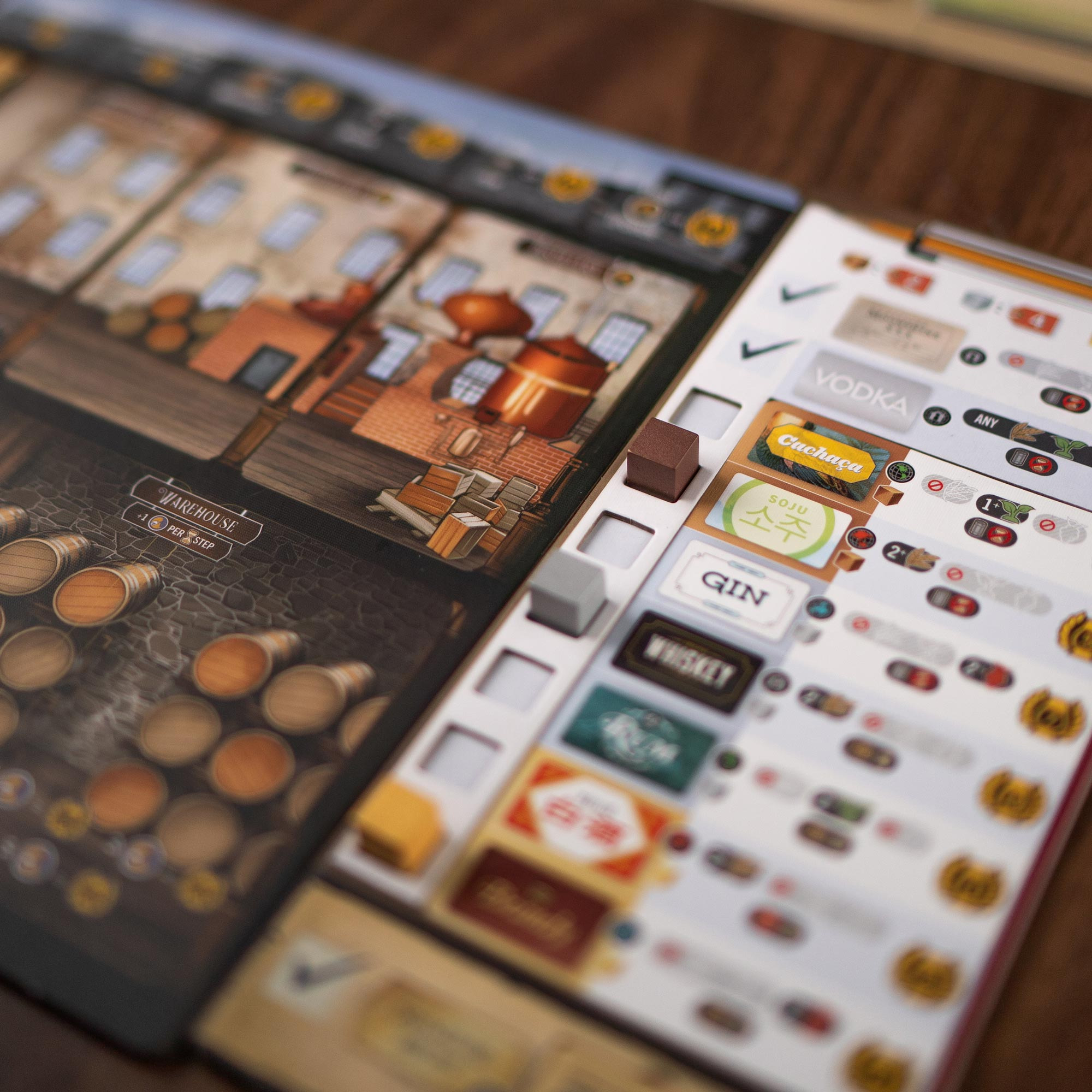
Players need to have a recipe for the spirit they want to make. These recipes need to be bought, except for moonshine, Vodka, and a player’s signature recipe. Every player has a different signature recipe, making each game slightly different. Setup includes picking one of a variety of tasting flight cards that all players use for the game. Tasting flight cards contain the recipes that all players can gain and use during the game.
The game provides personal goals and common achievements, allowing players to gain points beyond what they get selling spirits.
During our game, we both made the mistake of not turning over our signature recipe tile to see that the recipe was more specific and more complicated than what it looked like from the more decorative front side of the tile. I also forgot to age my signature spirit after distilling it – aging is a requirement for some spirits and is not allowed for others, so it’s not optional – you either must age your distilled spirit or not age it and sell it immediately. Aging delays the sale of that particular barrel of the product by one or more rounds of the game.
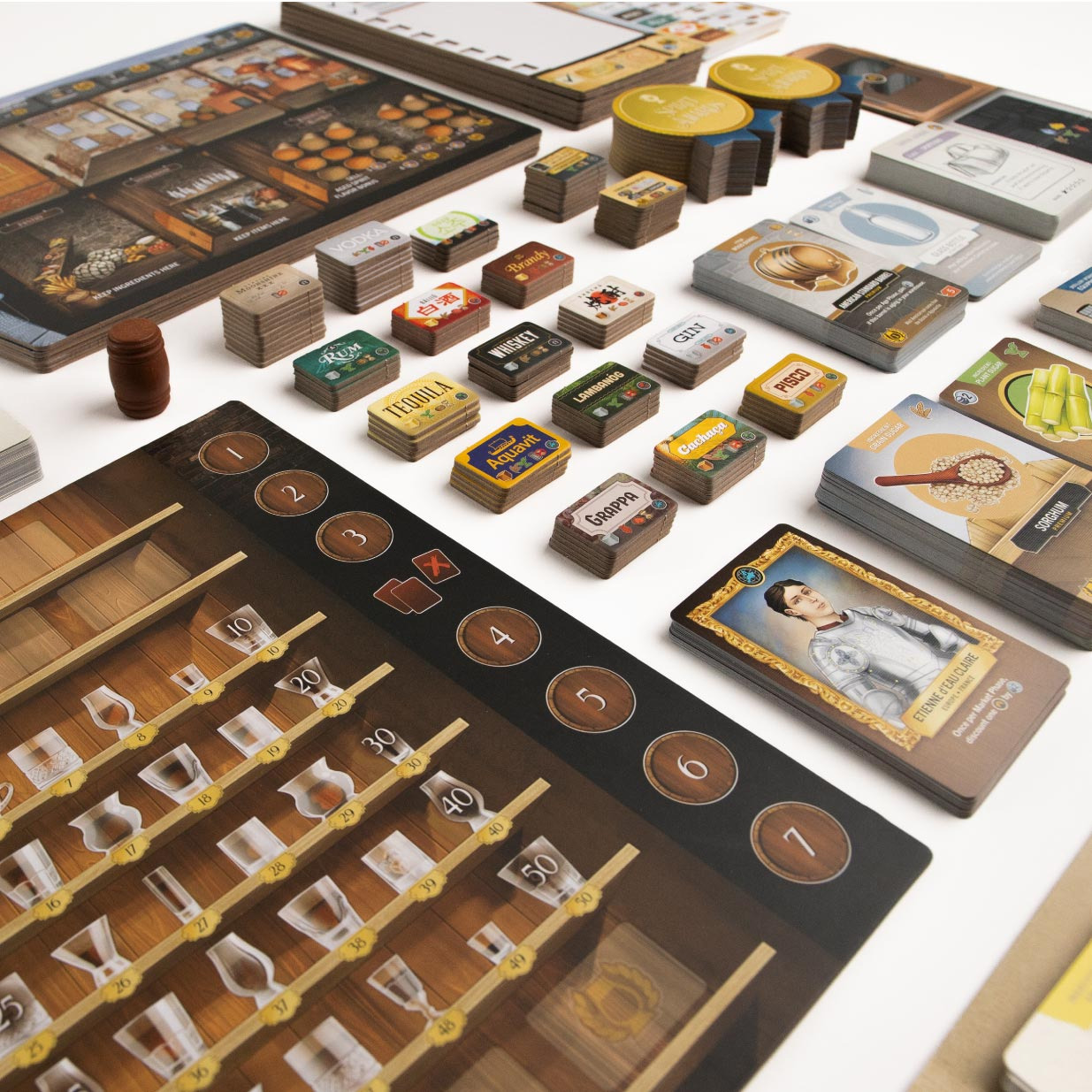
I had a good time playing this game. I liked that I could get more recipes as the game went on. I also liked that whenever I made a spirit, and a label was available, I could claim that label for a one-time bonus. Whenever a player board fills up with stuff during a game, it gives me a feeling of accomplishment, especially when placing markers to record my success.
The only thing that felt arbitrary in the game was the limit of buying two basic ingredients per round. The basic ingredients include free water, free yeast, and free grain sugar, so it makes sense to limit access to these – otherwise, I would grab the entire stack and use a vast set of cards for distilling, making the whole press-your-luck feature mostly moot. I wonder if the designer tried making these cost money instead of having a limit, and it just didn’t work well.
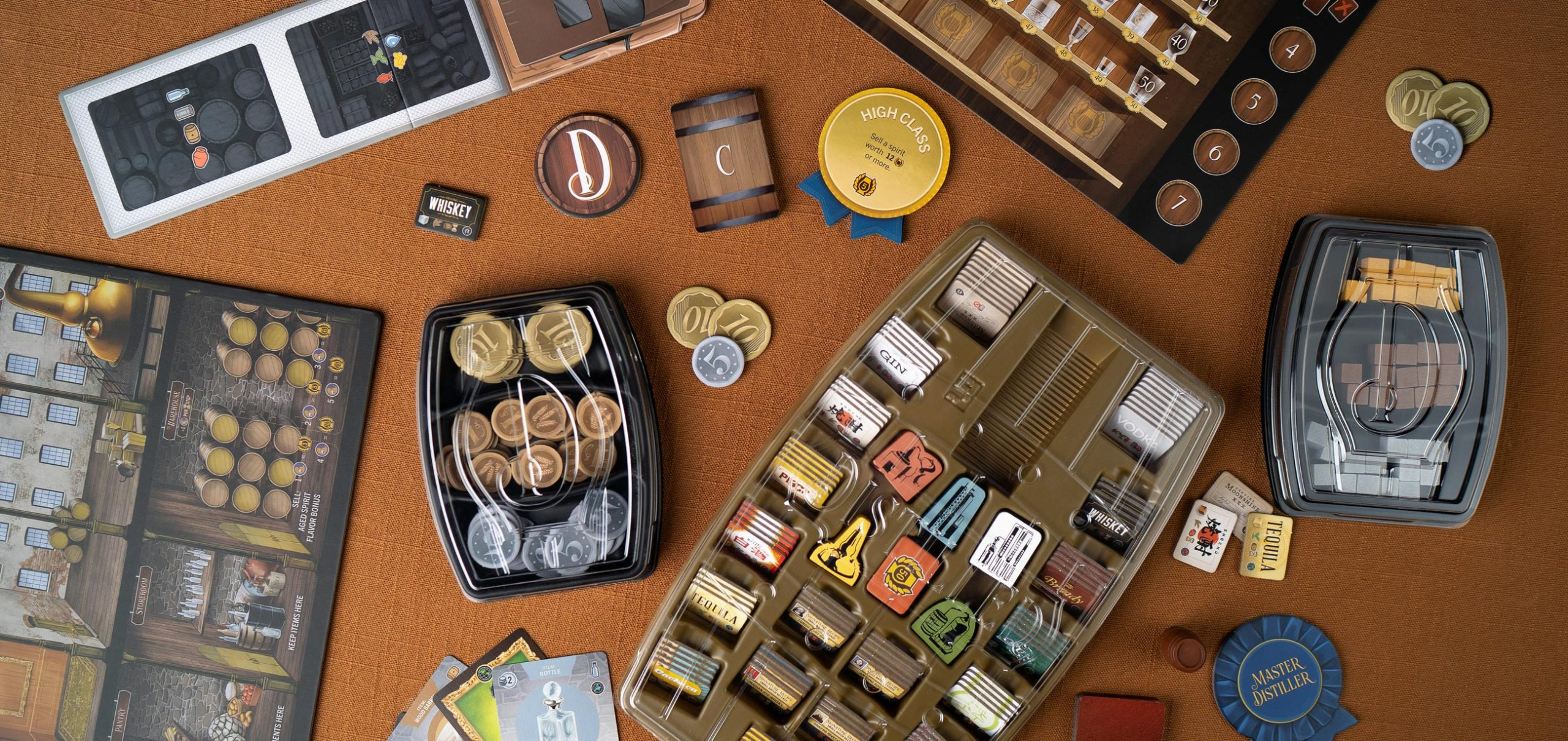
Finally, the game comes with storage trays and a diagram of how to fit the pieces in the box. The storage trays are excellent, especially when the pieces fit in the trays properly. The components are well made, and none of the game feels cheap or poorly manufactured.
